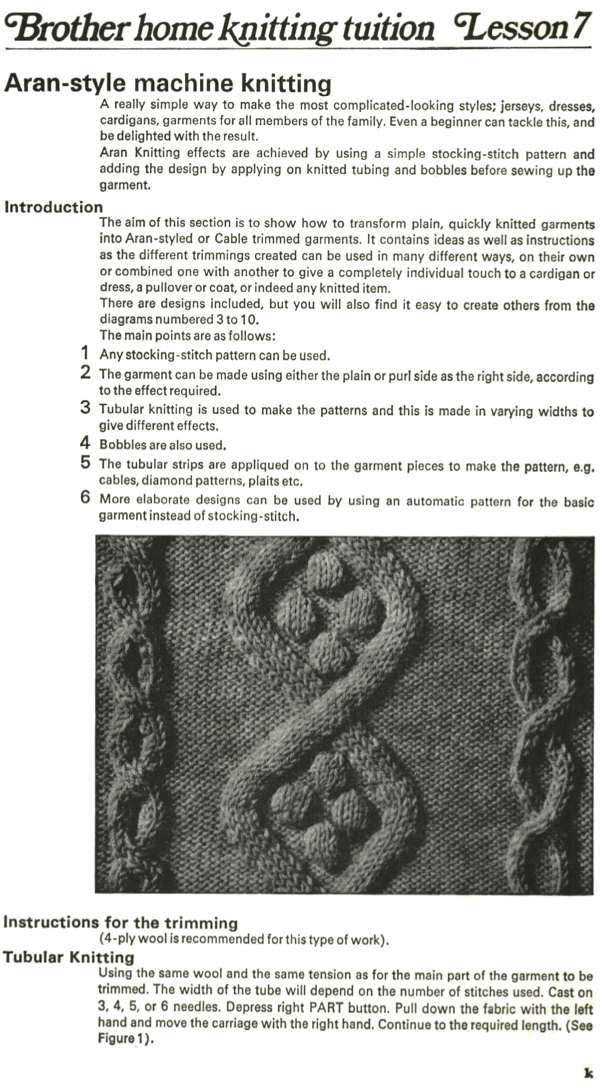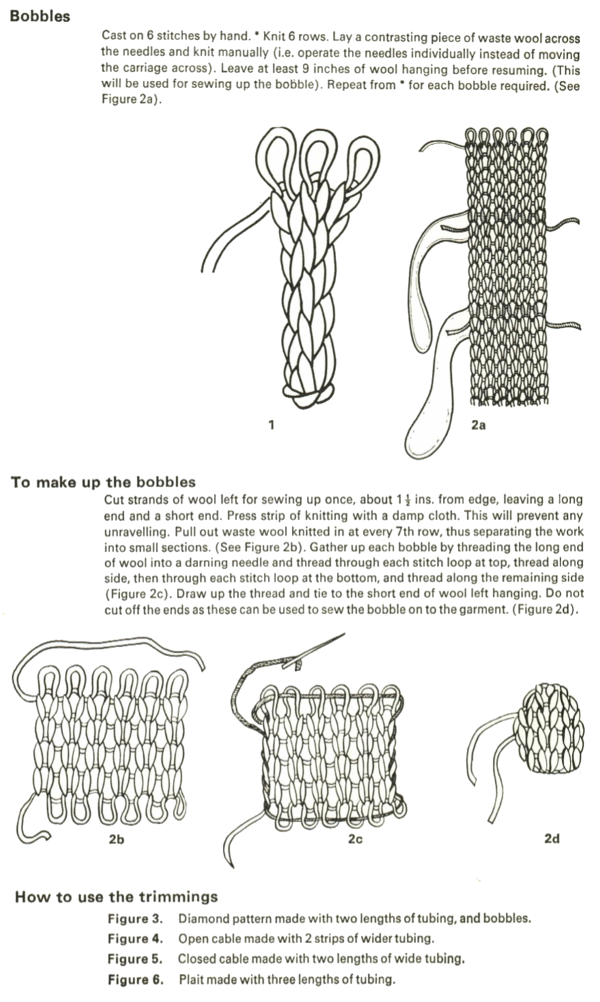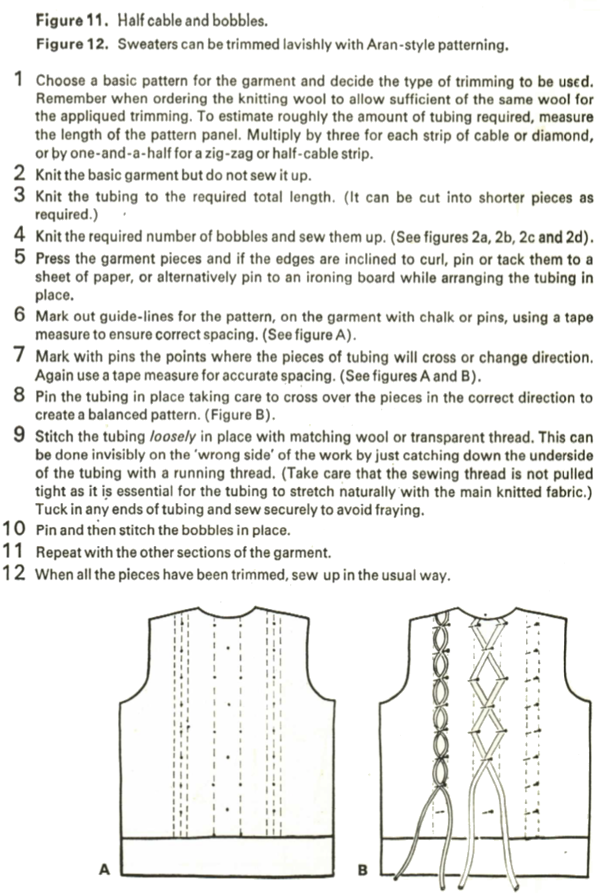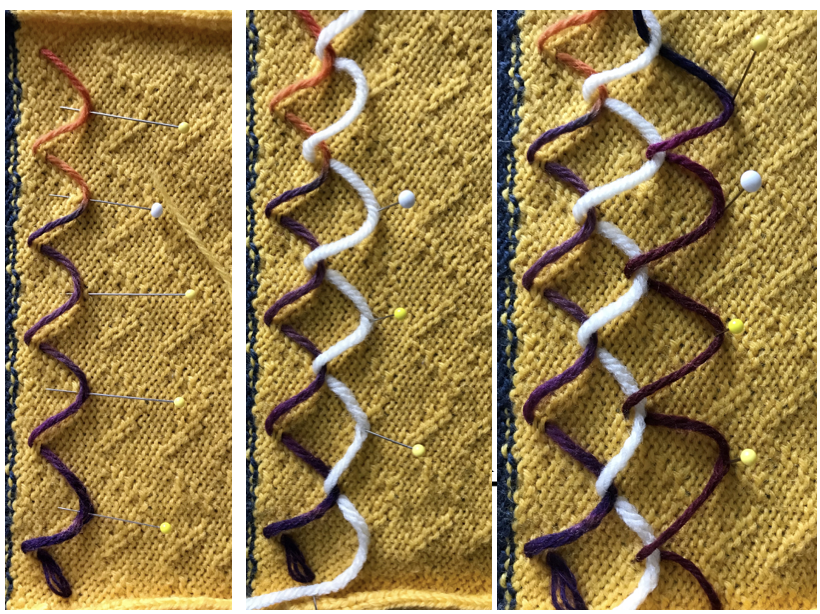Knit tubings/ cords of all sizes have been cropping up on runway photos, interlaced with cables, woven basketweave style, and as the “yarn in giant knits”. My category sidebar has a link to my compendium on the subject (Jan 30, 2012), written nearly a year ago, the making of the cords, and some published references. Additional ideas: in wider trims where a single knit stitch is required on the slip pass because the cord is wider than 4-5 stitches, and/or a flatter, single bed cord is required, one can play with a punchcard for the needle selection. Anywhere there is a punched hole in a blank row, the resulting selected needle will knit when the carriage makes a slip pass on that particular design row. Brother machines do not require a whole card to be punched for such trims since the option exists for controlling the slip facility for single rows by selecting only one of the part buttons. The machine will skip white squares in the direction of the pushed cam button, left or right, and knit every stitch traveling in the opposite direction. A punchcard repeat to serve the purpose:
if multiple knit stitches on slip rows are a consideration, in the image below the dashes and dots are representing needles in work, and width of trim, the black dots themselves also the punched holes in the selected area for the trim
a variant across a row, with 3 stitches slipped in between knit ones
the punchcard repeat for a machine such as Studio, where cam operation is different, the following would need to be punched for the required minimum punchcard height
Open tubular knitting using the ribber is possible in nearly every width. The wider the cord, the more it will want to flatten. Wire, various cording, and plastic tubing may all be inserted into the tubes if more sculptural forms are the goal.
An added note: the easiest cord is a narrow knit strip, knit on at tighter than normal tension, which will roll into itself, helping it retain its shape and in turn be substituted in many of the fabrics using i-cords. For wide strips that need to bend and curve, ribbed strips my work, particularly if knit in English or half English rib. Such ribbed strips may be braided flat, stitched together and in turn applied to sweater panels at their edges, center fronts, etc.
Previous posts: pretend cables 1, a few to try, the making of the cords, and mock aran inspiration from an early Brother Publication 



I have been asked about cords on Studio machines. I have not owned or worked on one for many a year. I did find these directions in an early Studio manual available online that may be of help to those trying to create them on that brand Testing concepts need not be done in actual cording. One option is to use an old swatch that can give some markers providing an idea of regular placement. Here I have used a 4 ply yarn as my “cord” to begin to visualize some relative of a swatch found on Spinexpo.com, of which this is a segment, in response to a query I received in a machine knitting group.
Testing concepts need not be done in actual cording. One option is to use an old swatch that can give some markers providing an idea of regular placement. Here I have used a 4 ply yarn as my “cord” to begin to visualize some relative of a swatch found on Spinexpo.com, of which this is a segment, in response to a query I received in a machine knitting group.
 Eyelets could be created at regular intervals to feed the cord through such as on the left above, where my yarn is stitched through the knit with a needle. Enough length is left free from one anchor point to the next so that the following length of cording may be fed through eyelets to anchor it, be brought around the loop from the previous length, create its own loop, and repeat the process for the desired length.
Eyelets could be created at regular intervals to feed the cord through such as on the left above, where my yarn is stitched through the knit with a needle. Enough length is left free from one anchor point to the next so that the following length of cording may be fed through eyelets to anchor it, be brought around the loop from the previous length, create its own loop, and repeat the process for the desired length.
A few more ideas for cord uses may be found in my post on pretend cables